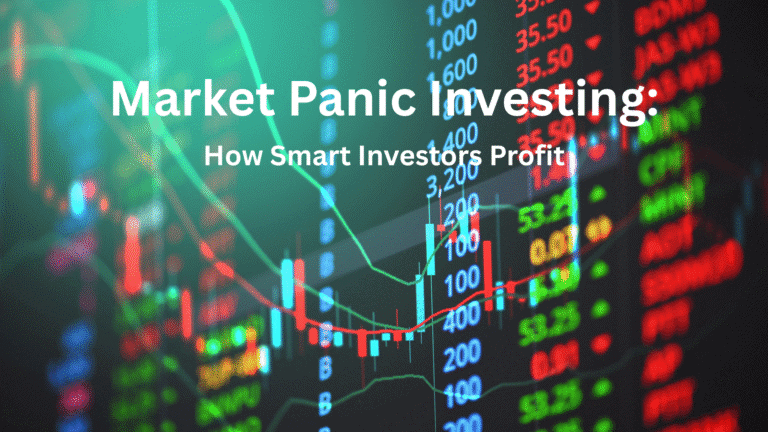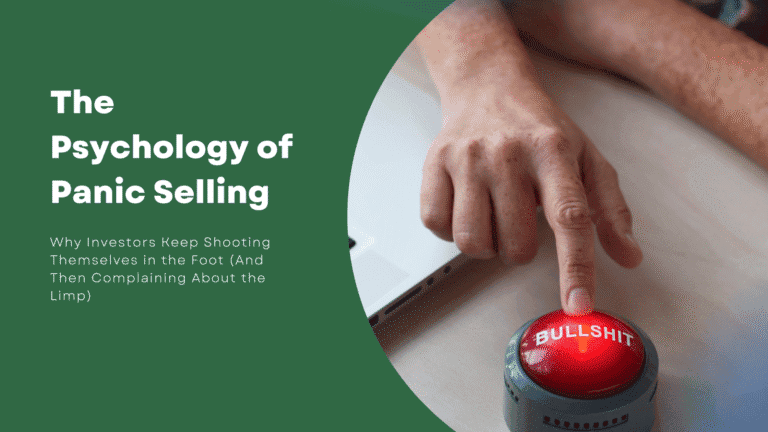Nvidia in 2025: Explosive Rocket Ship or Dangerous Bubble About to Pop?
Let’s be honest – Nvidia has become more than just a stock. It’s practically a religion at this point, complete with devoted followers on financial Twitter and skeptics warning of impending doom. With a market cap flirting around $3.1 trillion as of September 2025, it’s worth more than most countries’ entire economies.
The question everyone’s asking: Is this the investment opportunity of a lifetime, or are we watching the mother of all bubbles inflate before our eyes?
Wall Street isn’t exactly helping. Analysts are tripping over themselves to slap $1,200+ price targets on the stock, while critics argue those targets are as inflated as the valuations they’re trying to justify. Meanwhile, retail investors treat Jensen Huang like a rock star, and every dip in the chart sparks the same debate: Is this the next Amazon… or the next Cisco circa 2000?
What’s Actually Driving This Nvidia Madness
Look, Nvidia isn’t just making computer parts anymore—they’re basically building the nervous system of our AI-powered future. Think of them as the crew that sets up all the stage equipment so the rock stars (hello there, ChatGPT) can blow everyone’s minds. And business? Let’s just say it’s so good that people are probably pawning family heirlooms to buy more shares.
But let’s dig into what’s really fueling this absolute frenzy, complete with actual numbers—because nothing says credibility like cold, hard data served with a side of reality check.
The AI Revolution Is Real (And Hungrier Than a College Student at 2 AM)
Remember when GPUs were just for making video game explosions look pretty? Those days are long gone. Now they’re the horsepower behind every AI trick that turns your incoherent 3 AM thoughts into professional-sounding emails.
Ever since ChatGPT burst onto the scene in late 2022 like the cool kid who just transferred schools, demand has gone absolutely nuclear. Nvidia’s H100 chips became harder to get than concert tickets for your favorite band—waitlists stretching for months, desperate companies offering bribes, the whole nine yards.
Now we’ve got the Blackwell series coming in hot. These chips are so advanced that Jensen Huang (Nvidia’s leather-jacket-wearing CEO) keeps using words like “insane” to describe demand. They’re cranking out 30,000 wafers a month, and analysts expect these bad boys to bring in billions by the end of 2025.
Here’s the kicker though: AI isn’t just “neat technology”—it’s an absolute energy vampire. Training a single large AI model can use more electricity than some small towns consume in a year. And guess who’s providing the hardware that enables all this digital gluttony? That’s right—our friends at Nvidia.
The numbers are pretty staggering. Analysts are predicting AI infrastructure spending could hit $3-4 trillion by 2030, with Nvidia positioned to grab a massive chunk of that pie. Morgan Stanley is even forecasting a 600% increase in AI spending by 2028. If that’s not rocket ship territory, I honestly don’t know what is.
Data Centers: The Invisible Empire That Runs Everything
Google, Amazon, Microsoft—these aren’t just tech companies anymore. They’re building digital empires that make ancient Rome look quaint, and every single data center is packed wall-to-wall with Nvidia hardware, processing the absolutely insane amount of data we generate every day (yes, including that cat video you shared at midnight).
Here’s a fun reality check: “The cloud” is just a fancy way of saying “massive warehouses full of computers that never sleep.” And most of those computers are powered by Nvidia chips working overtime under fluorescent lights.
The numbers tell the story: In Q2 2025, Nvidia pulled in a mind-bending $46.7 billion in total revenue—up 56% from the year before and crushing every Wall Street prediction. To put that in perspective, that’s enough money to fund a small space program or buy Twitter twice over.
Data centers and AI now make up over 87% of Nvidia’s revenue. Microsoft alone is dropping $80 billion on AI infrastructure this year, and a huge chunk of that is flowing straight to Nvidia. When you’re the primary supplier for the digital infrastructure that basically runs modern civilization, business tends to be pretty good.
Gaming: The Origin Story That’s Now a Side Quest

Gaming is where Nvidia cut their teeth—like that garage band that somehow ended up headlining stadiums. RTX graphics cards are still amazing for making explosions look realistic and rendering worlds that look better than reality.
But in a plot twist worthy of a Netflix series, gaming has become the side hustle while AI pays for the penthouse. Gaming now contributes less than 10% of total revenue, while AI infrastructure is literally keeping the lights on and buying new buildings.
The crazy part? They’re still printing money on gaming too. Overall gross margins are sitting at 75%, which means for every dollar they bring in, they keep 75 cents after covering basic costs. That’s the kind of profit margin that makes other companies weep with envy.
Wall Street analysts are throwing around price targets like confetti at New Year’s, with some predicting $200+ stock prices. Tech CEOs can’t give a presentation without name-dropping Nvidia at least three times. Satya Nadella might as well get “Powered by Nvidia” tattooed somewhere visible.
The Ecosystem Lock-In: Stickier Than Spilled Soda
Here’s what really seals the deal: Nvidia’s CUDA platform. Once developers start building on it, switching to a competitor is like trying to move your entire digital life from iPhone to a flip phone—technically possible, but why would you torture yourself?
This creates what business folks call a “moat”—basically a competitive advantage so strong it might as well be surrounded by crocodiles. Once companies build their AI infrastructure on Nvidia’s platform, the switching costs are enormous. It’s like a very expensive, very profitable Hotel California.
Let’s Talk Numbers (Because Math Doesn’t Lie, Unlike Some Earnings Calls)
Here’s how Nvidia’s quarterly revenue has evolved from “pretty good” to “absolutely bonkers”:

That’s not gradual growth—that’s a hockey stick on steroids.
And here’s how their stock price has moved (simplified monthly averages):
- January 2024: ~$50
- July 2024: ~$100
- September 2025: ~$170
Again, that’s not normal growth. That’s “what the hell is happening” growth.
Revenue Breakdown (Q2 2025)
| Segment | Revenue | % of Total | Growth Rate |
|---|---|---|---|
| Data Center/AI | ~$40.6B | 87% | +73% year-over-year |
| Gaming | ~$4.2B | 9% | +16% |
| Other | ~$1.9B | 4% | +20% |
| Total | $46.7B | 100% | +56% |
AI is basically eating everything else for breakfast, lunch, and dinner.
But Wait—Why Are Smart People Getting Nervous?
For every person shouting “buy buy buy!” like it’s the world’s most expensive auction, there’s someone else quietly mumbling about bubbles and historical crashes. And honestly? They have some pretty good points.
The Valuation Makes Your Eyes Water
Nvidia is trading at about 38 times forward earnings. The average tech company trades at 20-25 times. That’s like paying Ferrari prices when a Honda would get you where you need to go—it only makes sense if that Ferrari never breaks down and gets you there twice as fast forever.
With interest rates sitting above 4%, the era of “free money” that inflated tech valuations is basically over. Nvidia’s market cap hit $4.2 trillion in September 2025, making it worth more than most entire countries’ economies. That’s… a lot of expectations to live up to.
AI Hype Might Be Running Ahead of Reality
Don’t get me wrong—AI is genuinely transformative. But training these massive models costs more than producing a Marvel movie. If CEOs start asking uncomfortable questions like “What’s our actual return on investment here?” Nvidia’s party could end pretty quickly.
Remember Meta’s metaverse adventure? Billions of dollars spent on virtual legs that nobody wanted. Tech hype cycles can turn ugly fast when reality doesn’t match the PowerPoint presentations.
The Customer Concentration Problem
Here’s a scary thought: Over 39% of Q2 revenue came from just two customers (probably Microsoft and Meta, though Nvidia won’t say). If one of those customers decides to cut spending, reduce orders, or—God forbid—build their own chips, Nvidia could be in serious trouble.
It’s like being in a relationship with someone way out of your league. Exciting while it lasts, terrifying when you think about what happens if they leave.
Competition Is Heating Up (And Everyone’s Bringing Their A-Game)
Nvidia’s dominance isn’t guaranteed forever. AMD’s MI300X chips are getting better. Intel’s Gaudi 3 promises twice the efficiency. Even Nvidia’s biggest customers are starting to build their own chips—Google has TPUs, Amazon has Trainium and Inferentia, and more custom silicon is coming by 2026.
Plus there’s the whole geopolitical mess. The US-China chip war reads like a soap opera, and China is determined to build their own AI chips to reduce dependence on American companies. That’s potentially billions in revenue at risk if tensions escalate.
So What’s the Verdict? (Spoiler: It’s Complicated)
Nvidia is simultaneously the investment opportunity of a lifetime and a heart attack waiting to happen. Your tolerance for financial roller coasters will determine which category you think it fits into.
The Bull Case Still Makes Perfect Sense
We’re genuinely in the early stages of the AI revolution. That $3-4 trillion in infrastructure spending by 2030? Nvidia is positioned to capture a massive portion of it. They’ve got $30 billion in cash, virtually no debt, and they’re spending massive amounts on R&D to stay ahead.
Their competitive moat isn’t just deep—it’s practically a canyon. Autonomous vehicles, drug discovery, climate modeling—Nvidia is providing the picks and shovels for every major technological gold rush happening right now.
But the Bear Case Is Also Pretty Compelling
Everything is priced for absolute perfection. One disappointing earnings report, one major customer reducing orders, one unexpected technical setback, and the stock could easily drop 20-30% in a day.
History is full of dominant tech companies that seemed unstoppable until they weren’t. Cisco was the king of the internet boom until it wasn’t. Intel dominated chips until it didn’t. The higher you fly, the harder you can fall.
Plus there are regulatory concerns brewing. The EU is investigating AI market concentration, and there’s growing backlash against the environmental impact of power-hungry data centers.
My Take: It’s Both Rocket Ship and Bubble (And That’s Terrifying)
If I had to pick, I’d say Nvidia is the rocket ship of our generation—but rockets can explode. The AI revolution is real, the demand is legitimate, and Nvidia is driving the bus. But the valuation assumes everything goes perfectly forever, which… never happens.
For investors with strong stomachs and long time horizons, it’s probably a winner. For people who check their portfolios every morning with their coffee, it might cause ulcers.
The smart play? Dollar-cost averaging and keeping it to 5-10% of your portfolio at most. Jensen Huang might walk on water, but even messiahs have bad days.
Quick Reality Check (September 2025 Numbers)
- Market Cap: ~$4.2 trillion (bigger than most countries)
- Stock Price: ~$170 (down from peaks but still stratospheric)
- Forward P/E: ~38x (expensive, but maybe worth it?)
- Gross Margins: 75% (absolutely printing money)
- Main Revenue: AI/Data Centers (87% of that massive $46.7B quarter)
- Biggest Risk: Valuation crash meets geopolitical reality
The Bottom Line (With a Reality Check)
Nvidia is the stock that creates millionaires… until it creates ramen noodle budgets. The technology is real, the profits are massive, but the valuation assumes sunshine and rainbows forever.
Invest smart, size appropriately, and remember: rockets reach incredible heights, but gravity always wins eventually. Whether Nvidia lands softly on Mars or craters spectacularly back to Earth? That’s the multi-trillion-dollar question.
Just remember—hindsight is 20/20, but financial markets are more like trying to read an eye chart in a hurricane while riding a unicycle. Invest accordingly.
Disclaimer: This might contain affiliate links. I only recommend things I’d actually use, but I might earn enough commission to cover my coffee addiction while writing these reality checks about Wall Street’s latest obsessions. This isn’t financial advice—talk to a real professional, not someone making jokes about trillion-dollar companies.





